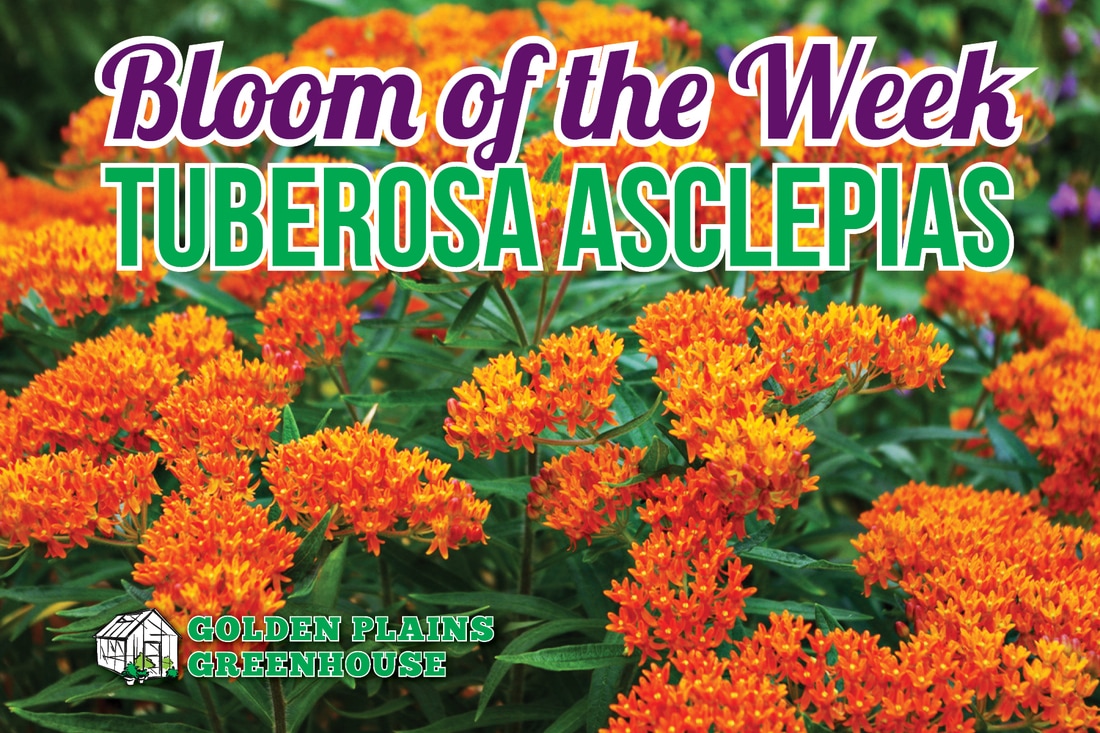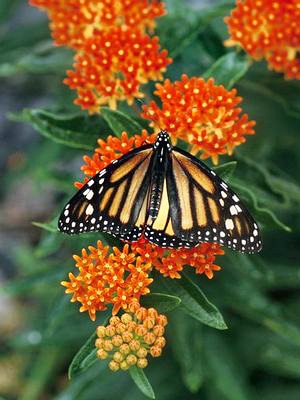One of the most popular choices to help attract butterflies is Tuberosa Asclepias, also known as Butterfly Weed. Not only do they provide a source of nectar for them, but they also act as a host for the eggs of Monarch butterflies.
| Tuberosa Asclepias is a perennial, native to North America. It is a welcome addition to any border, butterfly or wildflower garden as it will bloom with brightly coloured, orange flowers from early to mid-summer all the way until fall. Growing Asclepais requires very little effort. The plant, suitable for growing in zones 3-9, thrives in bright sunlight and poor, dry, sandy or gravelly soil with a slightly acidic or neutral pH. Once established, Asclepais is drought tolerant and blooms dependably from year to year. Also, keep in mind that Asclepais has long, sturdy roots that make transplantation very difficult, so locate the plant in its permanent place in the garden. Trim old growth every spring to keep them neat and healthy. No fertilizer is required, and may even harm the plant. Mealybugs and aphids may cause problems during the blooming season, but both are easily controlled by applications of insecticidal soap or horticultural oil. |
- Plant your butterfly garden in a sunny location (5-6 hours each day), but sheltered from the winds. Butterflies need the sun to warm themselves, but they won't want to feed in an area where they are constantly fighting the wind to stay on the plants. It is also a good idea to place a few flat stones in your sunny location so the butterflies can take a break while warming up.
- Butterflies need water just like we do. Keep a mud puddle damp in a sunny location, or fill a bucket with sand and enough water to make the sand moist.
- Do not use pesticides in your garden.
- Butterflies use two different types of plants, those that provide nectar for the adults to eat (nectar plants: Aster, Shasta Daisies, Hollyhock, Echinacea, etc.) and those that provide food for their offspring (host plants: Digitalis, Lonicera, Parsley, etc.).
Check out the North American Butterfly Association for more information on creating a butterfly garden.



 RSS Feed
RSS Feed